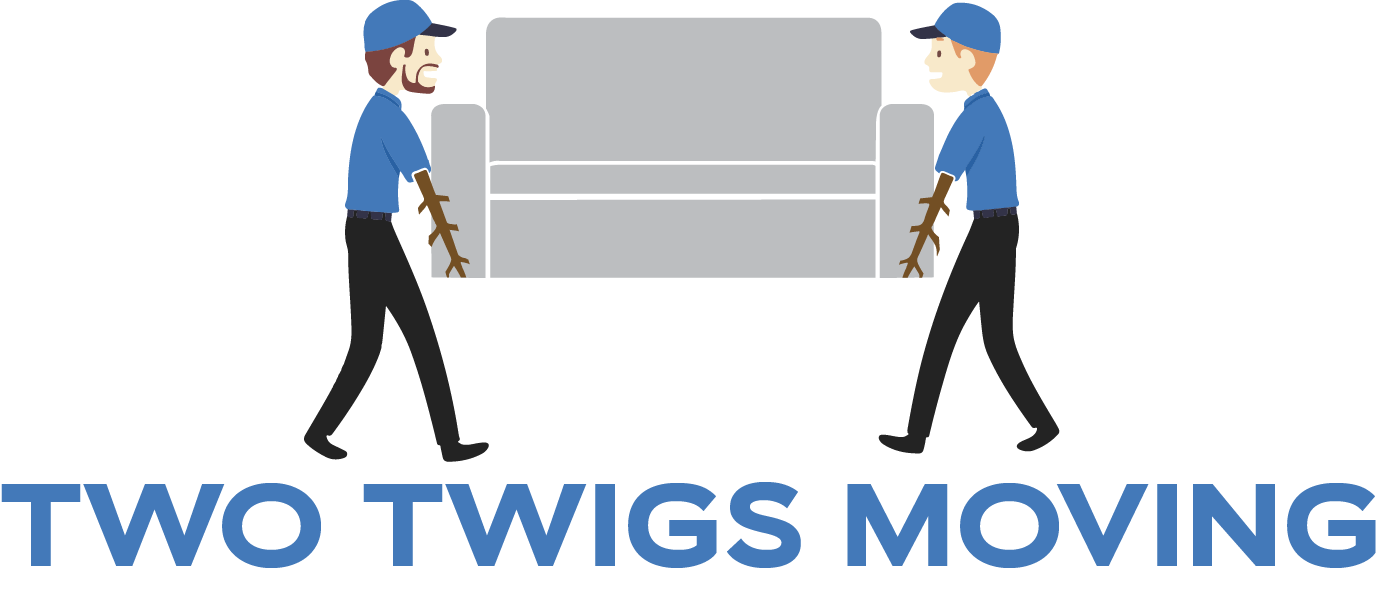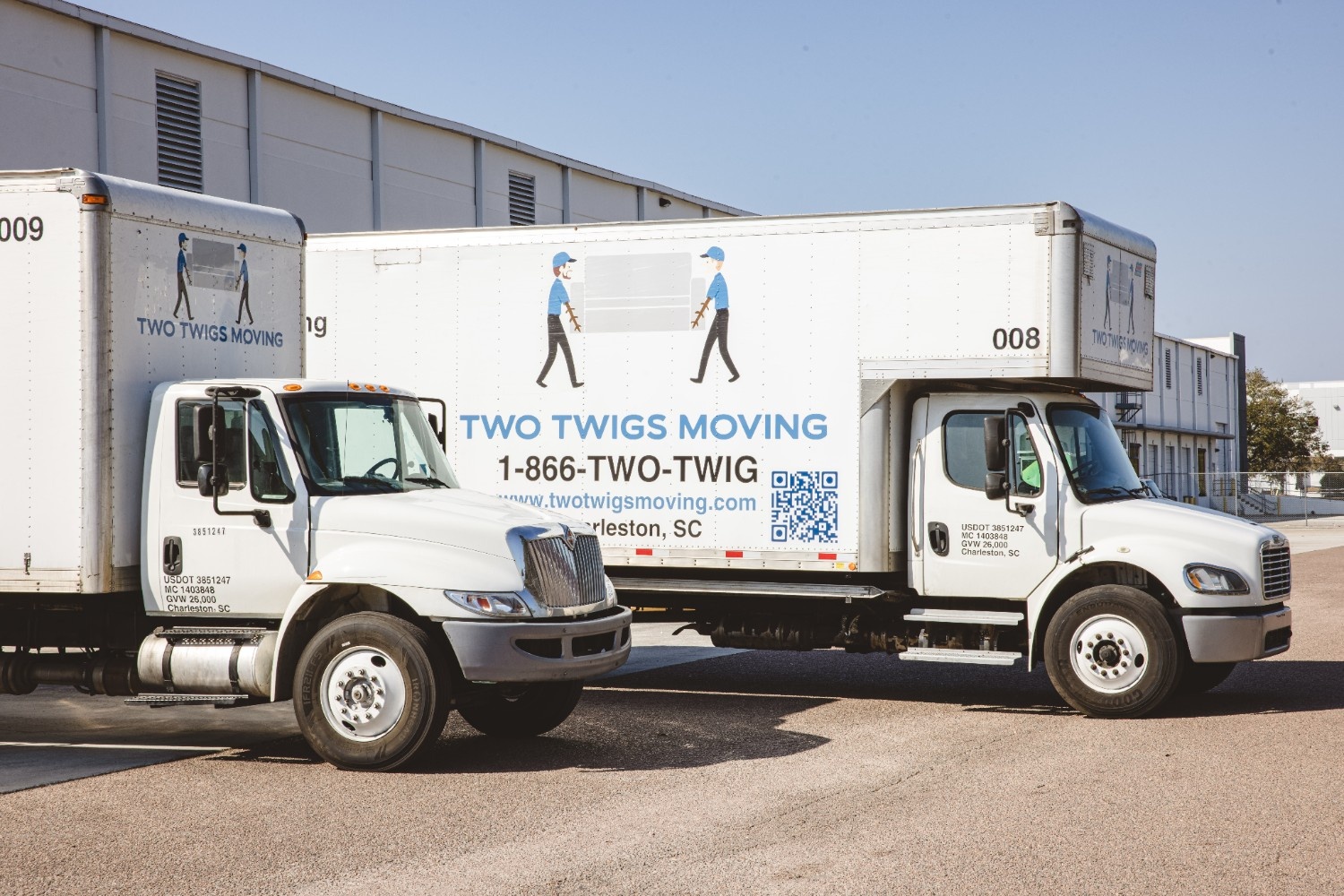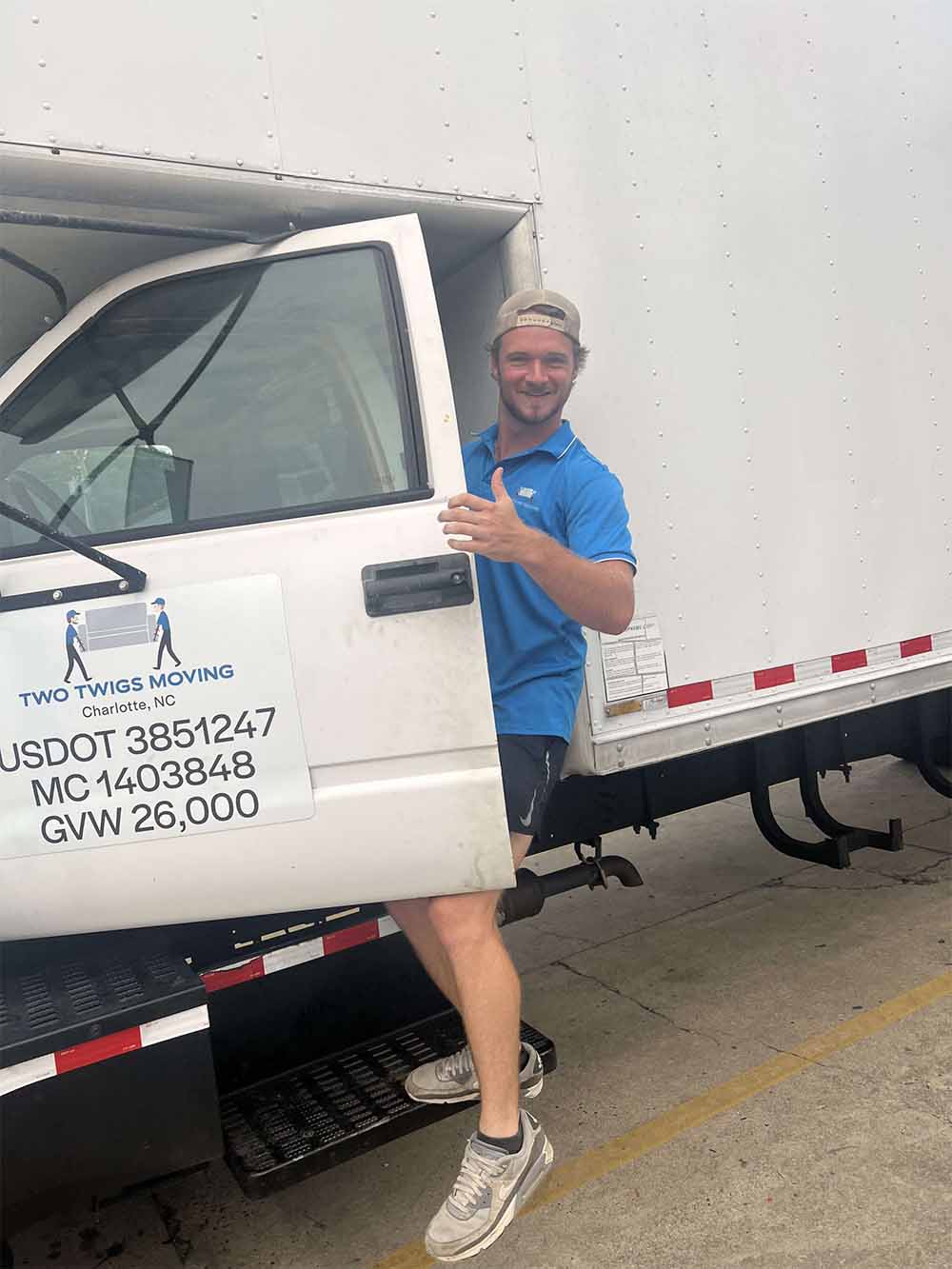Moving day can be stressful, but clear communication with your movers can make all the difference. Here’s how to ensure everything goes smoothly:
- Confirm Details Early: Double-check your moving date, time, addresses, and services. Share specifics about your home layout, parking, and any challenges.
- Prepare Written Instructions: Document priorities, fragile items, and special requirements. Use labels for boxes and checklists to stay organized.
- Set a Point of Contact: Identify the team leader, exchange contact info, and decide on communication methods (in-person, calls, or texts) to address issues quickly.
- Trust the Movers: Give clear directions upfront, then let the professionals handle the work. Stay available for questions but avoid micromanaging.
- Handle Problems Calmly: If issues arise, address them with the team leader immediately. Document damages and refer to your contract for claims.
- Show Gratitude: Offer water or snacks and tip movers based on their effort – $20–$100 per mover is common.
Setting Up Communication Before Moving Day
Getting a head start on communication is crucial for a smooth moving experience. By setting clear expectations and sharing important details, you can avoid unnecessary confusion when the big day arrives.
Confirming Key Details with Your Movers
Good pre-move communication can save you from costly delays or mix-ups. Start by confirming the basics: your moving date, pickup time, current and new addresses, and the services your movers will provide. Even small errors, like a typo in your address, can lead to significant issues – like movers showing up at the wrong location or struggling to find parking.
It’s also important to clarify the scope of services. Will the movers pack your belongings? Handle furniture disassembly and reassembly? Provide storage if needed? Don’t forget to ask about the size of the crew and the truck assigned to your move. For example, knowing whether you’ll have two movers or four – and the size of the truck – helps you plan better. If you have a large household and the crew seems too small, discuss adjustments to ensure everything stays on schedule.
Once these fundamental details are locked in, shift your focus to the unique aspects of your home and belongings.
Sharing Information About Your Belongings and Home
Help your movers prepare by sharing details about any challenges they might face at your current or new home. Mention tricky access points like narrow doorways, stairs, long walks from parking areas, or tight elevators. This information allows the crew to bring the right equipment and plan their approach.
If you own specialty items like pianos, pool tables, antiques, or large appliances, let your movers know in advance. These items require special handling, and giving notice ensures they bring the necessary tools and allocate enough time. For instance, companies like Two Twigs Moving specialize in transporting delicate and oversized items, but they need to know beforehand to prepare properly.
Don’t forget to highlight fragile or valuable items like electronics, glassware, mirrors, or anything with sentimental value. These items deserve extra care and attention during the move.
Additionally, inform your movers about any parking restrictions or building requirements. Some apartments require advance notice for moving trucks, while city parking might need permits. Share access codes, building management contacts, or specific delivery instructions to avoid hiccups on moving day.
Creating Written Instructions and Agreements
To avoid any last-minute confusion, document everything. Written instructions ensure everyone is on the same page and help solidify the plans you’ve discussed. Your service agreement should clearly outline the services included, the number of movers, and the size of the truck. This provides a safeguard to ensure the movers stick to the agreed schedule and services.
For items that need special care, create a detailed checklist. Include inventory notes, packing instructions, and transport strategies for delicate belongings like artwork or electronics. This extra step can make a big difference in ensuring your most precious items are relocated safely.
Staying in Touch with Movers During the Move
When the movers arrive, clear and effective communication ensures everyone stays on the same page without slowing down the process.
Setting Up a Main Point of Contact
As soon as the moving crew arrives, identify the team leader and exchange contact details. This person will serve as your go-to for all communication during the move. Share names and cell numbers to enable real-time updates. A 2024 industry report found that moves with a designated contact person and consistent updates were completed 18% faster than those without. Decide on your preferred communication method – quick calls for urgent updates or text messages for routine check-ins – and provide a backup contact in case you’re unavailable.
"He was prompt with updates and tracking any issues." – Joe H, Customer
Once the contact is established, the next step is to discuss how to prioritize loading and handling.
Explaining Loading and Handling Priorities
Meet with the team leader to go over your priorities and highlight any items that need special attention. For example, fragile antiques, expensive electronics, or sentimental heirlooms should be noted. Consider using a system like color-coded stickers or a written list to make these items easy to identify. If there are essentials – like a mattress or cleaning supplies – that you’ll need right away upon arrival, let the movers know so these can be loaded last and unpacked first. This step ensures the plans you made before the move stay consistent throughout the day.
Choosing the Right Communication Methods
Beyond having a dedicated contact, tailoring your communication method to the situation can make everything run more smoothly. Here’s a quick breakdown of when to use different methods:
| Communication Method | Best Use Case | Pros | Cons |
|---|---|---|---|
| In-person | For complex instructions or urgent concerns | Immediate feedback and clarity | May interrupt the crew’s work |
| Phone call | For urgent issues requiring quick resolution | Fast and direct | Can disrupt workflow if overused |
| Text message | For non-urgent updates or confirmations | Convenient and provides a record | Might be overlooked if phones are busy |
Use in-person discussions for detailed or time-sensitive matters, phone calls for quick problem-solving, and text messages for routine updates or confirmations.
"All communication was quick and efficient." – Kara Lamar, Customer
By matching the communication method to the situation, you ensure that everyone stays informed without interrupting the movers’ progress, making the entire process smoother.
At Two Twigs Moving, we prioritize open and responsive communication to make your move as seamless as possible. Our team is here to keep you informed and handle any concerns with care.
Giving Direction Without Getting in the Way
Striking the right balance between offering clear guidance and trusting professional movers is key to a smooth moving experience.
Pointing Out Special Instructions and Priorities
Before moving day, prepare a detailed plan that includes an inventory list and any special instructions. Clearly mark boxes with labels like "FRAGILE" or include room names and content descriptions. This simple step ensures movers know exactly where items belong and how to handle them.
When the crew arrives, take a quick walk-through of your home with the team leader. Highlight specific instructions for delicate or unusual items, such as antiques, oddly shaped furniture, or pianos. For example, you might say, "Please wrap the glass dining table vertically to avoid damage."
If you have high-value or particularly fragile items, discuss them during your initial consultation with the moving company, not on the day of the move. This allows the team to prepare the right equipment and assign experienced movers to handle these items properly.
Once you’ve communicated your instructions, step back and let the professionals take over.
Letting Professional Movers Do Their Job
Once you’ve given clear directions, it’s important to trust the movers to do what they do best. Professional crews have refined their methods through years of experience, and their systems are designed to maximize efficiency and safety.
Avoid hovering or micromanaging. While it might feel helpful to offer advice, it can actually slow the process or create unnecessary confusion. Trust their expertise in packing, loading, and handling your belongings.
Stay available for questions, but resist the urge to follow the crew around. If you do notice an issue – like a mover struggling with a particularly heavy item – bring it up with the team leader rather than stepping in yourself. Movers rely on established safety protocols and clear communication to handle these situations effectively.
Using an Inventory Checklist to Stay Organized
An inventory checklist is a great way to stay organized without disrupting the movers’ workflow. Before moving day, create a room-by-room list that includes major furniture pieces, boxed items, and any belongings needing special care.
As movers load items onto the truck, check them off your list instead of asking repeatedly if specific items have been packed. This approach keeps you informed and gives the crew space to work efficiently. Keep your checklist handy on a clipboard or mobile device for easy updates throughout the day.
To stay on track, review your checklist at set intervals, like after each room is loaded. This ensures nothing gets overlooked while respecting the movers’ process. Once you arrive at your destination, use the same checklist to confirm that everything has arrived. If anything is missing, you’ll have the documentation needed to address it promptly.
At Two Twigs Moving, we’ve found that clear communication and mutual trust create a seamless moving experience. By working together, we can ensure a smoother, more efficient move for everyone involved.
sbb-itb-a5538b6
Handling Problems and Building Good Relationships
Effective communication on moving day does more than just prevent mistakes – it helps build a strong rapport with your moving team. Even with meticulous planning, unexpected hiccups can happen. How you handle these moments and interact with your movers can shape your overall experience.
Dealing with Unexpected Problems
When something goes wrong, staying calm is key. Communicate any issues immediately to the team leader. If there’s a delay, confirm the updated timeline and ask about their plan to get back on track. For any damage, take photos right away and refer to your contract to understand liability and claim procedures.
If you need to file a claim, make sure to include all relevant evidence, such as photos and detailed descriptions of the damage. For disputes or miscommunications, revisit your agreement to clarify terms. Should the situation escalate, don’t hesitate to involve a supervisor or consult consumer protection agencies. Keep your communication polite and clear – courtesy often encourages cooperation, while being rude can have the opposite effect.
Stay present during loading and unloading to oversee the process, and be specific when giving instructions. Once any issues are resolved, fostering a positive relationship with your moving team will help keep the day running smoothly.
Showing Appreciation to Your Moving Team
After resolving any challenges, showing gratitude can go a long way in maintaining a good working relationship. Recognizing the effort your movers put into their work not only boosts morale but can also improve the quality of service you receive.
Simple gestures like offering bottled water, sports drinks, or asking about lunch preferences can make a big difference. Verbal praise, especially when the team handles your items with care, is another way to show your appreciation.
When it comes to tipping, here’s a general guide:
| Move Type | Suggested Tip per Mover | Notes |
|---|---|---|
| Local Move | $20–$30 | For half-day or simple moves |
| Full Day Move | $50–$60 | Standard full-day service |
| Long-Distance Move | $50+ | For complex, multi-day moves |
| Exceptional Service | $60–$100 | For outstanding care and effort |
Hand cash tips directly to each mover at the end of the job. Some people prefer giving a portion of the tip upfront to encourage great service from the start. Adjust the tip amount based on the quality of service – exceptional effort deserves extra recognition.
At Two Twigs Moving, we believe that clear communication and mutual respect turn challenges into manageable solutions. By addressing problems professionally and showing genuine appreciation for your team’s hard work, you can ensure a smoother, more satisfying moving experience for everyone involved.
Key Points for a Smooth Moving Day
Here’s a quick rundown to help keep your moving day stress-free and well-organized:
Before the Move
- Double-check all the details: pickup and delivery addresses, timing, and the size of the moving crew.
- Share any important home layout details, like tight staircases or parking restrictions.
- Write down all critical instructions and agreements to avoid confusion later.
On Moving Day
- Set up a clear line of communication with the team leader.
- Clearly explain your priorities, such as specific room assignments or items needing extra care.
- Use the right communication method: talk in person for complex issues and send texts for quick updates.
- Let the movers do their job without unnecessary interruptions – they’re the experts, after all.
Handling Problems
- If something goes wrong, address it immediately with the team leader.
- Stay calm, take photos to document the issue, and refer to your contract for guidance on resolving disputes.
Showing Gratitude
- Offer water or refreshments to the crew and acknowledge their hard work.
- If you’re happy with the service, consider tipping each mover between $20 and $100, depending on the quality of their work.
Using an inventory checklist can help you stay organized without hovering over the movers. These tips will help ensure your moving day runs smoothly, with clear communication and minimal stress.
At Two Twigs Moving, we know that good communication can transform a hectic day into a well-coordinated and positive experience.
FAQs
How can I make sure my movers handle fragile and valuable items carefully?
To make sure your delicate and precious items are managed with care, begin by labeling the boxes containing these items clearly. Use bold labels like "Fragile" or "Handle with Care", and place them where they’re easy to spot. During the initial walkthrough with your moving team, point out these boxes and share any specific instructions for handling them.
For items that need extra protection – like glassware or antiques – inform the movers ahead of time. You might also want to ask that these items be packed or loaded separately to reduce the chances of damage. Clear communication and detailed guidance will go a long way in ensuring your belongings are handled properly.
What should I do if my movers face parking or access challenges on moving day?
If your movers run into parking or access challenges on moving day, a little preparation and clear communication can make all the difference. Confirm parking arrangements ahead of time, and if permits are required, take care of those in advance. If there are specific rules in your building or neighborhood, let property management or neighbors know beforehand to sidestep any issues.
Talk to your moving team about access points, staircases, elevators, or anything else that could pose a challenge. Being proactive can save time and keep the moving process running smoothly and efficiently.
How can I share my priorities and special instructions with the movers without being overbearing?
To make sure your priorities and special instructions are clear, start the day by talking with your movers about your main concerns and expectations. Highlight key details – like fragile items, where specific pieces should go, or tasks that need to be done quickly – rather than micromanaging every part of the process.
Touch base occasionally to confirm things are on track, but try not to interrupt too often. This not only shows confidence in the movers’ skills but also helps ensure your directions are understood and followed. Open communication and a cooperative mindset can make the whole day smoother and less stressful.


.svg)


